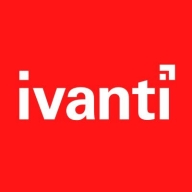

Microsoft Intune and Ivanti Neurons for MDM are both prominent players in the mobile device management category. While both have strengths, Intune has a slight edge due to its seamless integration with the Microsoft ecosystem, which offers existing Microsoft users a smoother experience and better return on investment.
Features: Microsoft Intune excels with its integration with Office 365 and Azure, offering a single sign-on experience, and is managed from the Azure console. It supports conditional access policies and co-management with System Center and Windows Defender, making it ideal for organizations heavily invested in Microsoft’s ecosystem. Ivanti Neurons for MDM stands out with advanced MDM features such as zero-touch provisioning and seamless enrollment, which streamline device setup and management processes.
Room for Improvement: Microsoft Intune needs better reporting, faster policy application, and enhanced support for Android policies. There's also a demand for improved macOS management and integration with non-Microsoft solutions. Ivanti can enhance its user interface, language support, and the integration between MobileIron and Advanced Neurons, as well as focus on improving overall monitoring capabilities.
Ease of Deployment and Customer Service: Microsoft Intune offers smooth deployment in both Public and Hybrid Clouds with its streamlined cloud provisioning. Premium support is often praised, although technical support experiences vary. Ivanti, also suitable for Public and Hybrid Cloud setups, sometimes presents challenges in setup and language support, with technical support being adequate but sometimes lacking in precise integration assistance.
Pricing and ROI: Microsoft Intune often comes bundled with other Microsoft services, making it cost-effective for organizations already using Microsoft products. Its competitive pricing, especially when combined with other licenses, is a significant benefit. Ivanti Neurons for MDM also offers competitive pricing, though it may not be as cost-efficient as Intune, especially for those leveraging extensive Microsoft integrations. Intune's seamless integration within the Microsoft ecosystem provides clear ROI benefits for existing Microsoft clients.
| Product | Market Share (%) |
|---|---|
| Microsoft Intune | 28.2% |
| Ivanti Neurons for MDM | 3.3% |
| Other | 68.5% |

| Company Size | Count |
|---|---|
| Small Business | 3 |
| Midsize Enterprise | 3 |
| Large Enterprise | 3 |
| Company Size | Count |
|---|---|
| Small Business | 117 |
| Midsize Enterprise | 46 |
| Large Enterprise | 152 |
Everywhere Work is here
Dealing with increasing demand for devices, applications and platforms?
Ivanti Neurons for MDM is your single solution to manage iOS, iPadOS, Android, macOS, ChromeOS and Windows.
Cloud‑based device management and security
Secure and manage endpoints running iOS, iPadOS, Android, macOS, ChromeOS and Windows.
Simple onboarding and provisioning process
Quickly and easily onboard devices and provision them over the air with all the apps, settings and security configurations they need.
Seamless, productive user experience
Deliver a delightful, native user experience across any device and OS while improving productivity.
Reduce the complexity and cost of endpoint management
Manage and protect any iOS, iPadOS, Android, macOS, ChromeOS, Windows and VR/XR device, from a single cloud-based solution.
Manage devices everywhere business happens
Know the devices your supply chain workers rely on are updated and in good operating condition, ready for the day’s business.
Microsoft Intune provides centralized management of mobile devices and applications, ensuring security, compliance, and productivity through integration with Microsoft services like Microsoft 365 and Azure Active Directory.
Organizations use Intune for managing mobile devices and applications, enhancing security and compliance across platforms. With features like single sign-on, conditional access, and zero-touch deployment via Autopilot, it facilitates efficient operations. Intune's scalability, easy enrollment, and capabilities such as remote wipe support diverse device management, offering robust data protection and efficient operation. Despite its features, improvement areas include reporting, compatibility with non-Microsoft devices, and better support for macOS and Linux devices.
What are the key features of Microsoft Intune?
What benefits should users look for in reviews?
In industries such as finance, healthcare, and education, Microsoft Intune is implemented to ensure secure and compliant device management. Companies leverage its capabilities to deploy security policies and manage both corporate-owned and BYOD environments, facilitating a unified approach to data protection and compliance.
We monitor all Unified Endpoint Management (UEM) reviews to prevent fraudulent reviews and keep review quality high. We do not post reviews by company employees or direct competitors. We validate each review for authenticity via cross-reference with LinkedIn, and personal follow-up with the reviewer when necessary.